A Titanic Tour: From the Keel Plates up
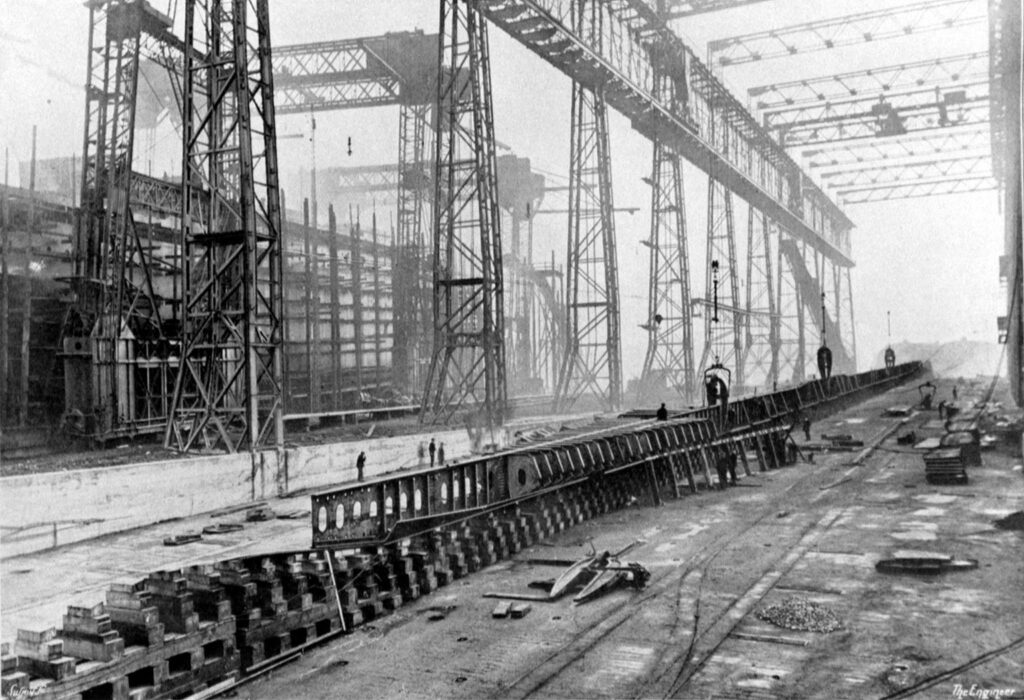
A Titanic Tour: From the Keel Plates up On 31 March, 1909, the first plates of Titanic’s keel were laid in Slipway No. 3 at Harland & Wolff in Belfast. The keel-laying is the first event in the life of a new ship. Titanic’s keel plates are described in the magisterial “Titanic: The Ship Magnificent” as follows: “Flat-plate design, formed by a single thickness of plating 30/20 inch thick and reducing to 24/20 inch thick toward the ends. The keel plate was 52 inches wide at its broadest point.” A “slab bar” of 19 1/2 inches by 3 inches provided extra strength below this plate. This also, as the authors note, protected the keel plates from damage via grounding and dry-docking. The “vertical keel,” which rose from this line of plate, helped form the central part of the ship’s double bottom and created what is commonly known as the ship’s “backbone.” This spine varied in thickness from 63 inches to 75 inches below Titanic’s gargantuan reciprocating engines. Looking at the ship, the keel is discernible from the rest of the bottom of the hull as a wide strip of riveted plate running down the center line. Initially resting on wooden blocks, like those that can still be seen today in the Thompson Graving Dock in Belfast, the keel would eventually be attached to the “floors,” which formed the outer skin of Titanic’s bottom and the lower plating for her cellular double bottom. Growing first outward and then upward, the hull would eventually radiate out from her keel and form the “box girder” of her hull, an incredibly strong and resilient design that had become common during the 19th century move to iron and steel construction. While Titanic’s keel is not the most glamorous part of her construction, it is one of the most important individual pieces of the ship. Given the immense hogging stresses that the hull was placed under as she sank upright (rather than the more common capsizing that usually is present during a sinking), the strength of her keel determined how long her hull maintained its integrity. With Titanic surpassing even Thomas Andrews’ on-site calculations about the time she could remain afloat, her backbone can be said to have been incredibly resilient. It is ironic that Titanic has been derided in some circles as a “weak” or “poorly constructed” ship. Nothing could be further from the truth. Titanic’s keel was perhaps the last part of the ship to part during her breakup. Two surviving sections of her double bottom were located in the mid-2000s and have since been extensively studied. The keel bar itself can be seen in photos of the sections. Next Week: The Double Bottom Written By: Nick DeWitt Photo Credit: Titanic Connections Archive
Recovering Titanic Bodies: The Grim Task of the Mackay-Bennett
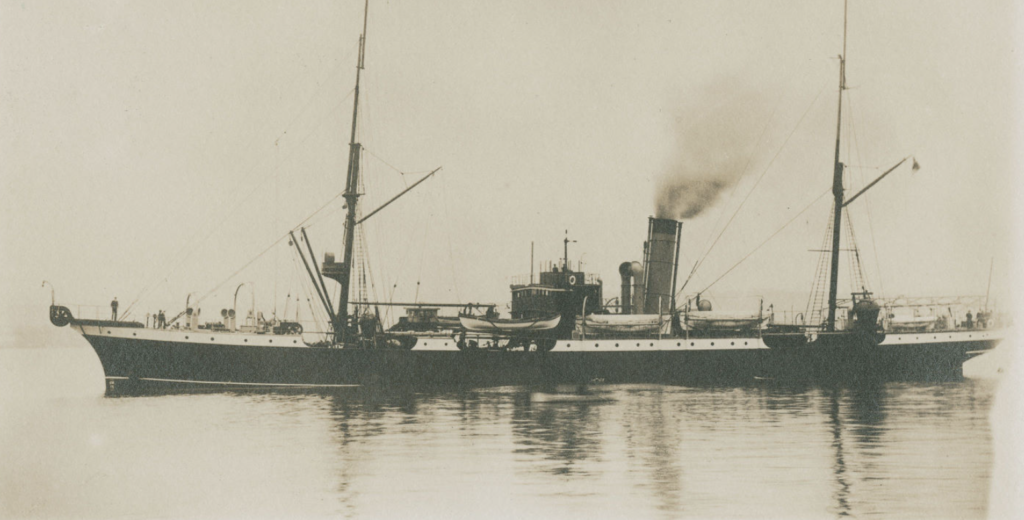
The Grim Task of the Mackay Bennett Almost two weeks to the day after the Titanic disappeared beneath the icy, glassy surface of the North Atlantic, the gruesome journey of those she left in the water as she sank began to come to a conclusion. The cable ship (CS) Mackay-Bennett, having set out from Halifax, Nova Scotia, on 17 April. After battling stormy seas and fog, the small vessel arrived at the site of the disaster and began the recovery of bodies on 20 April. She would eventually recover 306 of the bodies eventually recovered, by far the majority. Having put to sea with Canon Kenneth Cameron Hind to oversee burial services, John R. Snow, Jr. to handle embalming duties, 100 coffins, 100 long tons of ice, and the requisite supplies, Mackay-Bennett’s task was fraught. Of her 306 recovered bodies, 116 would be buried at sea, with only 56 of these identified before this burial. She returned to port with 190 bodies aboard, far above her capacity and what she had been supplied to care for. Among the bodies that were landed at Halifax on the morning of 30 April were John Jacob Astor IV, the wealthiest of Titanic’s passengers, Wallace Hartley, the ship’s heroic band leader and violinist, who was recovered with his instrument and music strapped to him, Isidor Straus, the owner of Macy’s Department Store who had elected along with his wife to stay aboard the sinking liner, and, most poignantly, the body of a then-unidentified small child who has since been identified as 19-month old Sidney Leslie Goodwin, whose entire family had perished in the sinking. Mackay-Bennett’s crew received a $100,000 reward for recovering Astor’s body, which they split amongst themselves and then paying for the burial and headstone of Sidney Leslie Goodwin. Goodwin’s funeral was well attended as the story of “Our Babe,” as the crew referred to him, had greatly affected the city. The Mayflower Curling Club in Halifax became the scene of great sadness as family members arrived to examine and identify their loved ones. It was here, so far from the scenes portrayed on film, where so many of Titanic’s personal stories reached their melancholy climax. In total, 209 bodies were eventually brought to Halifax. Of these, the city still has 150 victims resting in three cemeteries. Today, their graves stand as a silent reminder of the great human toll of the tragedy which took the lives of 1,496 souls. CS Mackay-Bennett CS Minia CGS Montmagny SS Algerine Nova Scotia Archives – Disposition of Bodies ex Titanic Recovered up to May 13, 1912 Reference: Clara Dennis Nova Scotia Archives 1983-468 no. 644 Reference: Fader Collection Nova Scotia Archives no. 324
A New Titanic Connections Feature: Titanic Tours
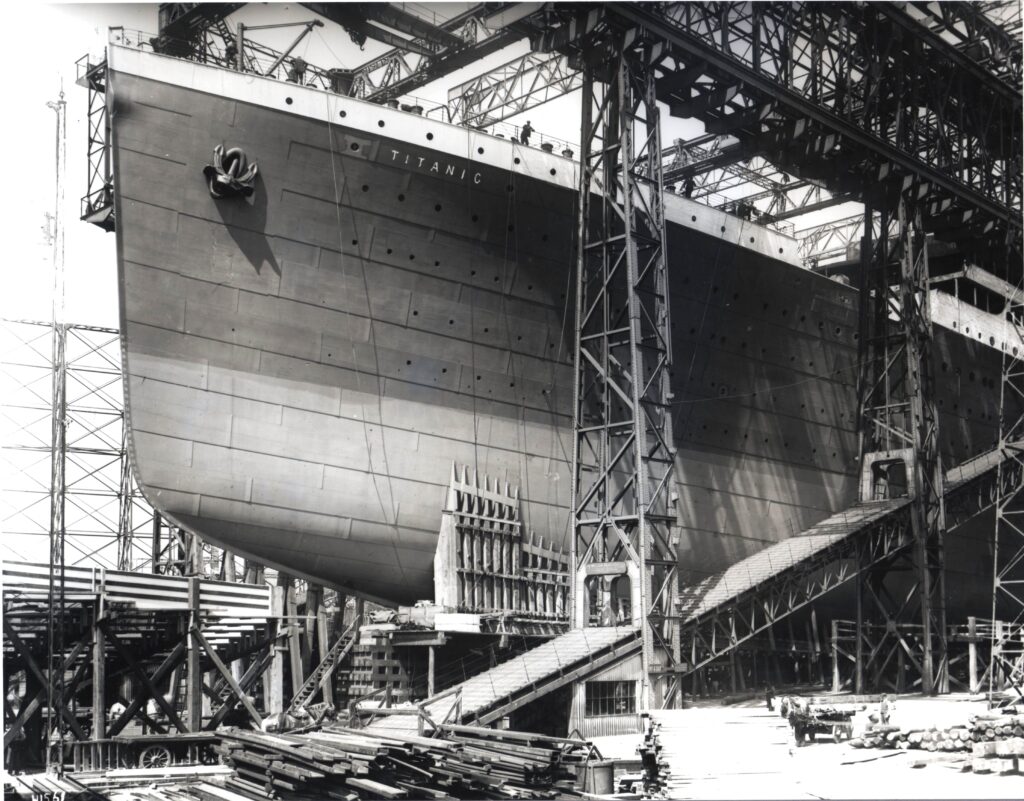
TITANIC CONNECTIONS FEATURE: TITANIC TOURS When Titanic was constructed at Harland and Wolff from 1909 through 1912, she would become the largest moving object ever made by man, edging out her elder sister Olympic thanks to additional features that were included in her after experience with Olympic showed various possibilities for improvement. Titanic Connections, using original photographs of the Titanic and her sister Olympic, as well as building plans, digital recreations, and other sources, will be taking our visitors on a tour of the ship. Every Tuesday, Titanic Connections’ historian Nick DeWitt will touch on a particular feature of the Titanic, starting with her keel plates and finishing eventually with the tops of the masts, funnels, and the wireless aerial. As Bruce Ismay said in James Cameron’s 1997 epic “Titanic,” the tour will be “from the keel plates up!’ We hope you’ll enjoy this feature and we look forward to bringing it to you each week. If you have a feature of the ship you want to make sure we touch on, please let us know! While the weekly tours will be done from the bottom of the ship to the top, we are always open to suggestions about what you’d like to hear more about when we get to that part of the ship! PHOTO CREDIT: Robert Welch, Harland & Wolff (now in the public domain)
The Sinking of the Lusitania: Oliver P. Bernard
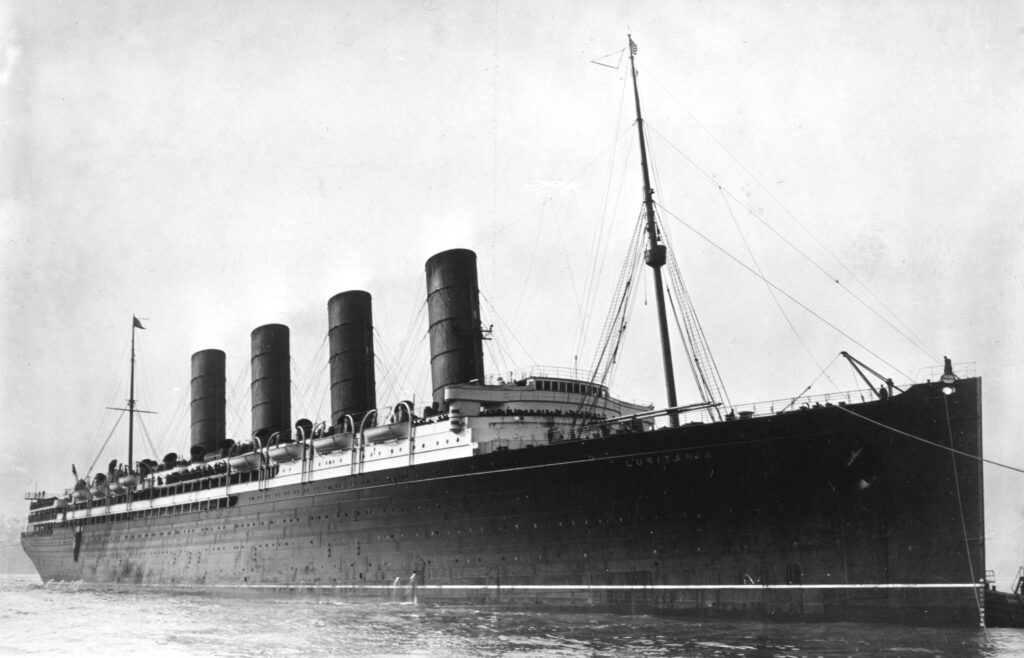
OLIVER P. BERNARD AND THE SINKING OF THE LUSITANIA ⚓ Did you know… … that a saloon passenger, Oliver P. Bernard, aboard RMS Lusitania reported to the Daily Telegraph that he had crossed paths with the radio operators during the tragic sinking of the vessel? He had reached the ship’s top deck next to the funnels when he crossed over to the starboard side and observed the two wireless operators desperately sending out their SOS. Mr Bernard’s account continues: “One of the operators [Leith] offered me a swivel chair to go down into the water. His colleague [McCormick] took out a pocket Kodak and going down on his hands and knees on the deck, which was now at an angle of about 35 degrees, took a solitary snapshot of the scenes forward. It would have been a wonderful photograph, but the film was destroyed in the water.” Saloon Passenger Henry Burgess also encountered the wireless operators at this time taking photographs of the sinking. This is his recollection: “As for myself, I went to the Marconi house and asked if a message had been got away. The operator said ‘Yes, but you had better get hold of this, old man, (throwing me an office chair), as you may want it.’ I did not take the chair but I went over to the starboard side and saw that now the water was nearly up to the level of the boat deck. The Marconi man came out of his office at that time and began to take photographs, which struck me as a cool proceeding. I don’t know whether he saved himself and his photographs.” Luckily, both wireless operators, Mr. Robert Leigh and Mr. David McCormick, survived the sinking. By: Jake Billingham Sources: The Lusitania Resource Photo credits: Peter’s Lusitania Page/Mr. David Craig McCormick Kodak Pocket Camera photo credits: Science+Media Museum Edited by: Nick DeWitt
A Titanic Wreck Tour: First Class Dining Room
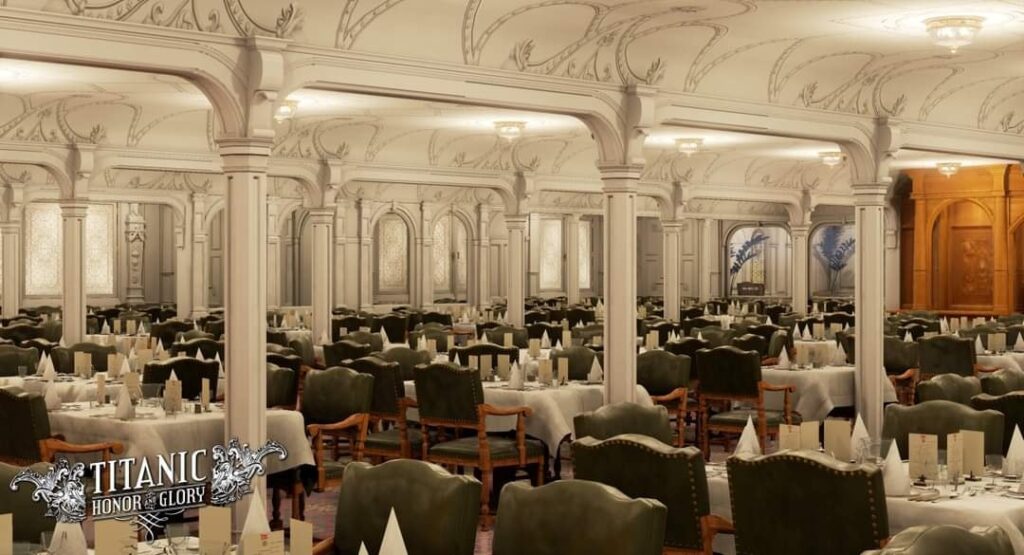
A TITANIC WRECK TOUR – THE FIRST CLASS DINING SALOON Situated aft of the Grand Staircase on D-Deck, and located amidship between the 2nd & 3rd funnel was the spacious 1st Class Dining Saloon. The massive room, which measured 113ft in length, and took up the whole of the ships 92ft width, could accommodate 554 passengers at once. The patrons to be seated at any number of the 115 separate tables, with each table having anywhere from 2-12 seats. The seats themselves were green & brown, with the cushions and backrest made of rich green leather, with legs and arms of polished oak. The Floor was made of intricately patterned gold, red, and blue linoleum tile, which shone brightly from the illumination of 400+ bulbs which lit the room not only from above but also from the sides behind the many leaded glass windows which flanked either side of the room. The walls were of intricately detailed oak, painted white, and in the center of the room was a massive brown oak and mahogany sideboard which housed a piano (used for Sunday services). When the great ship tore herself apart on the morning of April 15th, 1912, this room suffered catastrophic damage. The ship tore itself in two directly in front of the boiler casing for Boiler rm #1&2 ((The 3rd funnel)) and as a result, this room was split apart right on the back wall. When the ship struck the seafloor this area suffered heavy structural collapse. Seen for the first time in 2001 during James Cameron’s ‘Ghosts of the Abyss’ documentary, there were faint traces spotted, but on the whole, not much remained.Or did it?Lets take a look for ourselves! Post by: Matthew SmathersImages & Information courtesy of:James Cameron – Lightstorm entertainment, IFREMER, Rms Titanic Inc. Discovery Channel, Titanic: Honor & Glory, Encyclopedia Titanica, Ken Marschall, Bruce Beveridge – Titanic: The Ship Magnificent
Posthumous Fathers
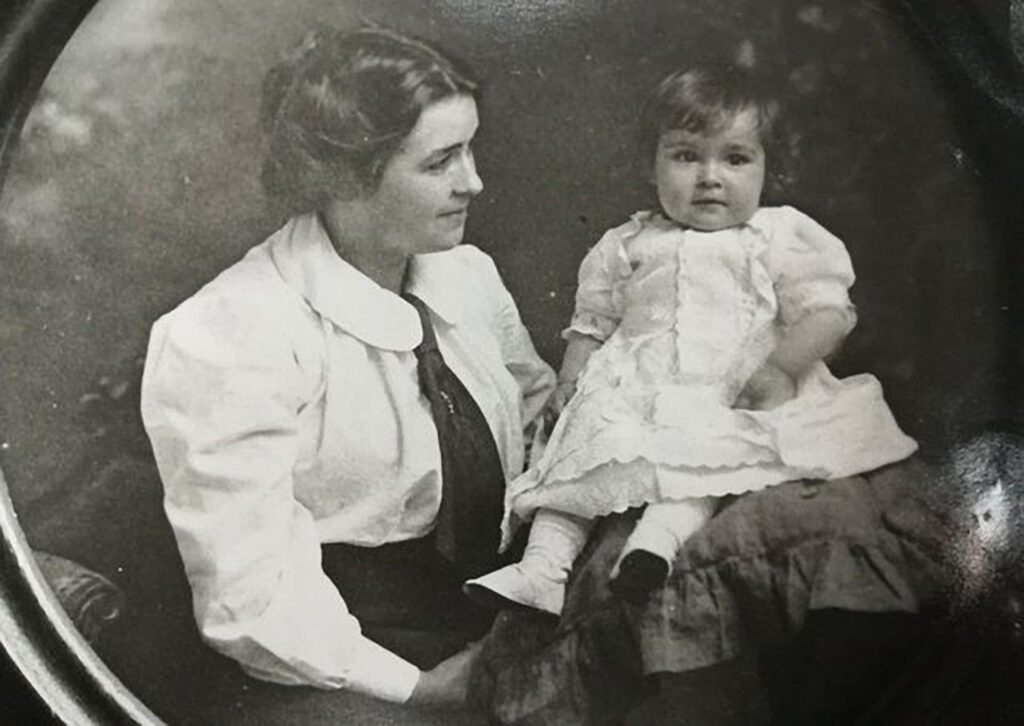
Did you know… … that 55 Titanic victims became fathers posthumously? On board Titanic there were 17 women that were known or likely to be pregnant. Two of those women died in the sinking. It was common for men to leave their pregnant wives ashore. A total of 55 men became fathers after their deaths on April 15, 1912. The most famous of them was John Jacob Astor, whose son was born on 14th August 1912. There were many other passengers and crew members who never had the chance to get to know their children. This includes Henry Morley, who was proven to be the father of Kate Phillips daughter, Ellen, only recently on a Titanic Connections live stream. Source: Encyclopedia Titanica (see the whole list with the 55 men here)
Egdar Samuel Andrew
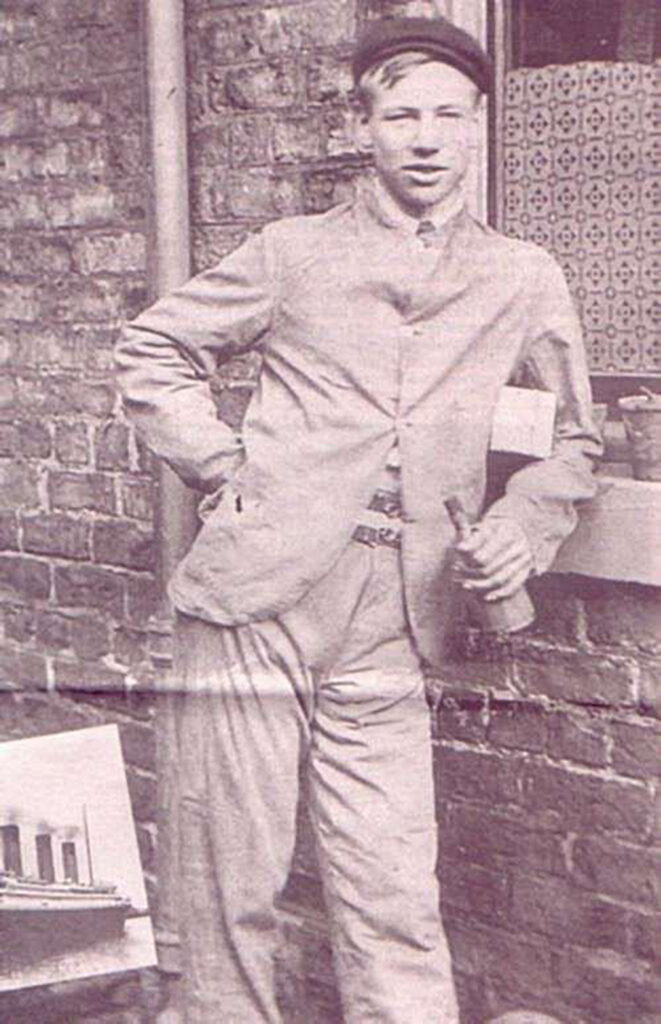
Did you know… … that there was a passenger who wrote a letter to a friend saying that he wanted to see Titanic on the ocean floor? Edgar Samuel Andrew was supposed to travel on the Oceanic but because of the coal strike, he was forced to change his ticket and go aboard the Titanic instead. On 8 April 1912 he wrote a letter to his friend from Argentina: “You figure Josey I had to leave on the 17th this [month] aboard the ‘Oceanic’, but due to the coal strike that steamer cannot depart, so I have to go one week earlier aboard the ‘Titanic’. It really seems unbelievable that I have to leave a few days before your arrival, but there’s no help for it, I’ve got to go. You figure, Josey, I am boarding the greatest steamship in the world, but I don’t really feel proud of it at all, right now I wish the ‘Titanic’ were lying at the bottom of the ocean.” 17 year old Edgar boarded Titanic as a Second Class Passenger in Southampton. He did not survive the sinking. His body, if recovered, was never identified.

